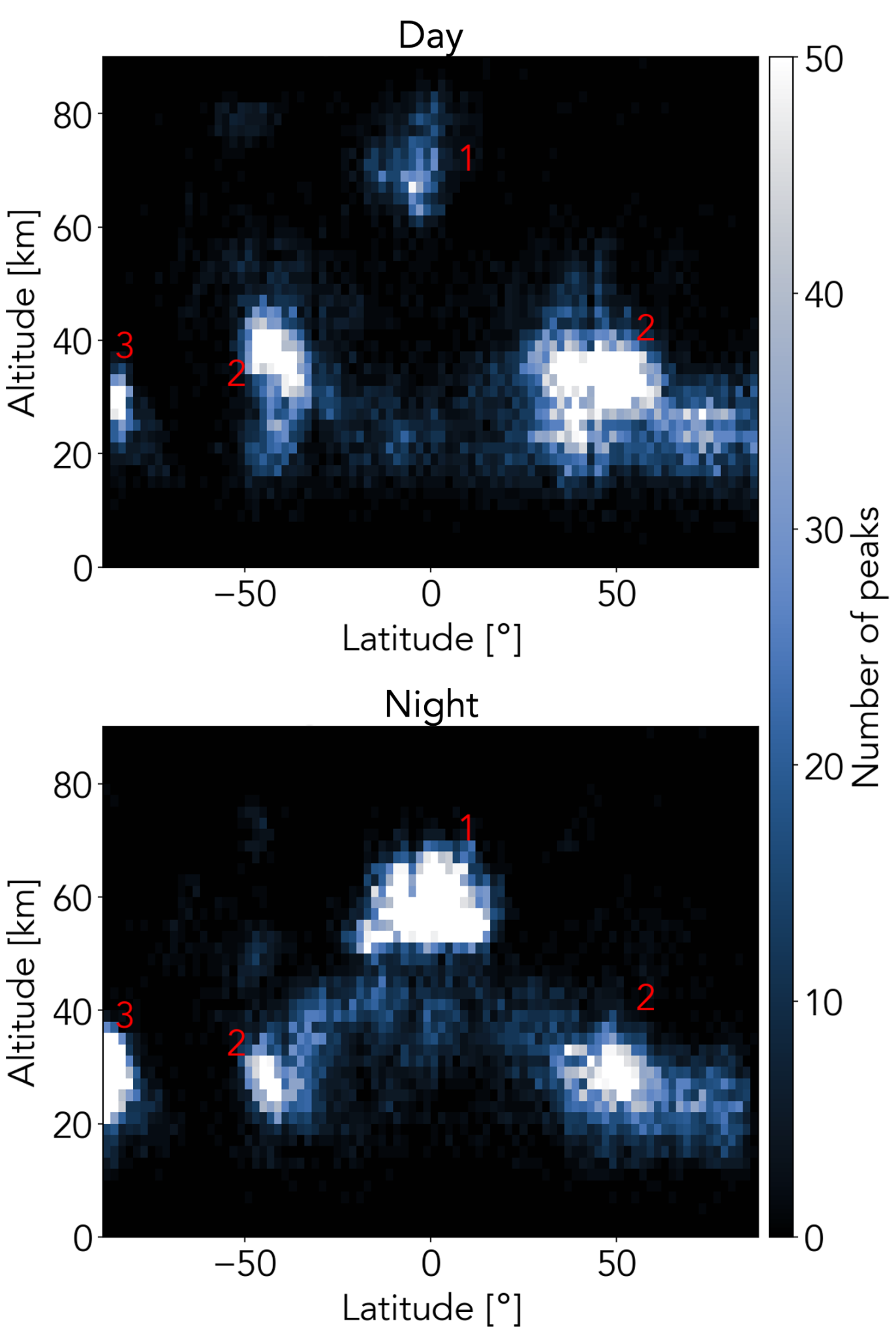
The first journal article about clouds identified by participants of the Cloudspotting on Mars project has been accepted for publication and is now available online! The article, “The Cloudspotting on Mars citizen science project: Seasonal and spatial cloud distributions observed by the Mars Climate Sounder” will appear in a special issue of Icarus titled “MRO: 16 Years at Mars”. MRO is the Mars Reconnaissance Orbiter, the Mars Climate Sounder is an instrument on MRO.
The paper shows several cloud maps, illustrating times and regions where many clouds were identified. The maps reveal several key cloud populations identified in data from the volunteers. The cloud populations include high-altitude CO2-ice clouds, clouds that form near the poles, and dusty-season water-ice clouds. The structure of the clouds follows the pattern of “thermal tides” in the atmosphere, which are global-scale oscillations in temperature. Where temperatures are lower than average, clouds are more common.
The paper also explains the motivation for the project and describes its setup on Zooniverse. It digs into the details of how cloud identifications made by participants were turned into a cloud catalog using machine learning. “Thank you to all the Cloudspotting on Mars participants for driving this research forward!” said project PI Dr. Marek Slipski, a research scientist at NASA’s Jet propulsion Laboratory.
There’s plenty more to study in this dataset and there are more images online to analyze: the second Mars Year of data is only about 50% done. The data from the second Mars year will help reveal how changing dust conditions affect cloud formation. If you’d like to join the search for clouds in the Martian atmosphere, head to https://www.zooniverse.org/projects/marek-slipski/cloudspotting-on-mars.
NASA’s Citizen Science Program:
Learn about NASA citizen science projects























